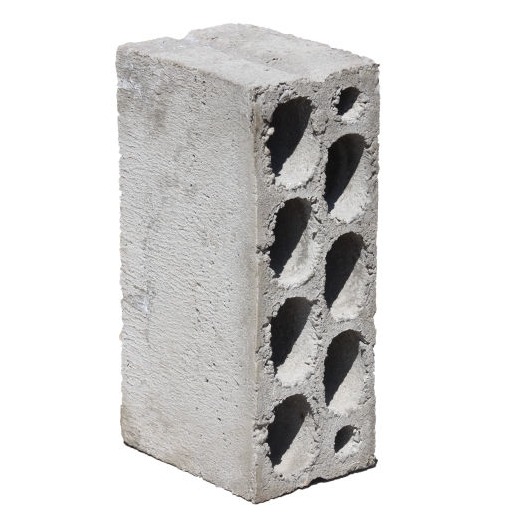

Grade-B type of blocks is also used as load-bearing units and have a block density between 1100kg/m kg/m 3.Grade-A type of blocks are manufactured for minimum average compressive strengths of 3.5, 4.5, 5.5, 7.0, 8, 5, 10.0, 12.5 and 15.0N/mm 2 at 28 days. Grade-A type of blocks is used as load-bearing units and have a minimum block density of 1500 kg/m 3.

The hollow (open and closed cavity) concrete blocks are defined in followings grades: Hollow (Open and Closed Cavity) Concrete Block They also provide facilities for concealing electrical conduit, water and soil pipes.Īs per ‘Indian Standard – IS 2185 (Part-1) 2005’ classification of concrete blocks is given as below 01. These blocks lower the natural weight of masonry constructions and improve the physical properties of walls, such as noise and thermal insulation. It accelerates the construction process, saves cement and steel and reduces the work expenses at the construction site. Hollow concrete blocks are more commonly used in masonry construction. These holes or cavities reduce the total cross-sectional area of the block and hence the weight of block structure as a whole. For low density blocks, industrial wastes, such as fly ash or bottom ash are used as the primary raw materials and are often called cinder blocks /breeze blocks in different parts of the world.Īs per the definition given in the ‘Indian Standard – IS 2185 (Part-1) 2005’, hollow concrete blocks are having one or more large holes or cavities which either pass through the block (open cavity) or do not effectively pass through the block (closed cavity) and having the solid material between 50 and 75% of the total volume of the block calculated from the overall dimensions. For high-density blocks, Portland cement and aggregate, usually sand and fine gravel are used as a raw material. They are the standard sized rectangular hollow blocks made of cast concrete of high or low density. Moreover, to avoid confusion with slabs and panels, the height of the blocks should not exceed either its length or six times its width.


Yet, their size and mass will be such that one can handle them easily. Concrete blocks come in modular sizes and vary by country. What are Concrete Blocks?Ĭoncrete blocks are rectangular concrete masonry units either, solid (other than units used for bonding, such as a half-block) or hollow (open or closed cavity). The article deals with what hollow concrete blocks are, their pros and cons, properties and various types. In this article we are discussing both the varieties, yet, latter in more detail. 1) Solid concrete blocks and, 2) Hollow concrete blocks. The concrete blocks are available in two variations. Now, with growing demand for construction, cheaper and faster techniques and materials are the need of the hour.Ĭoncrete blocks are one such construction materials which help in achieving cheaper as well as faster construction than conventional bricks. In early days, burnt brick masonry and stone masonry were popular. In due course of time, many techniques for the masonry were developed and it became a structural part of the shelter. The prehistoric man lived in caves, and later, he began constructing walls from the mud. Shelter is one of the three basic needs of man along with food and clothing.


 0 kommentar(er)
0 kommentar(er)
